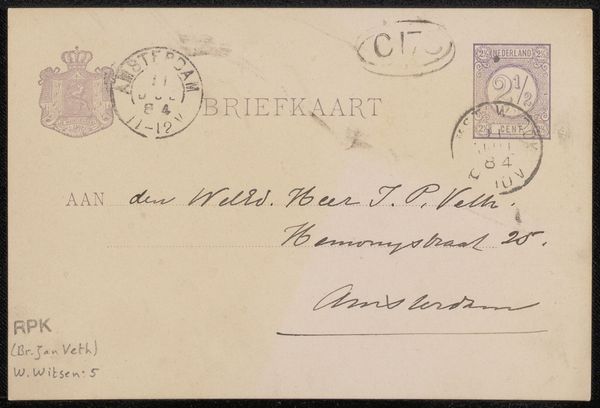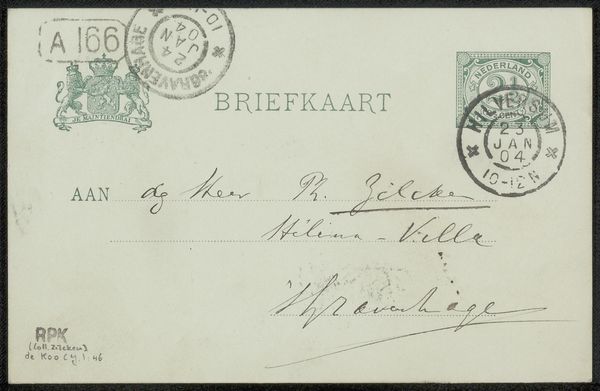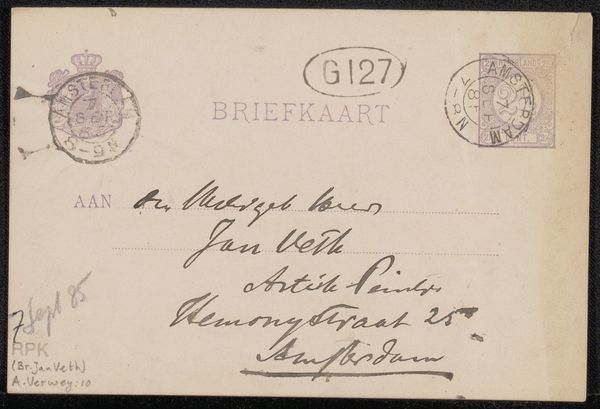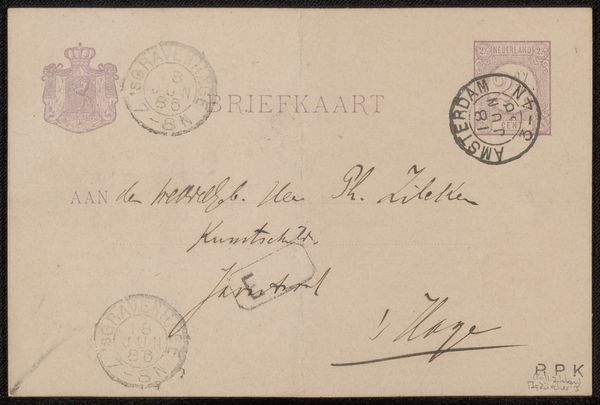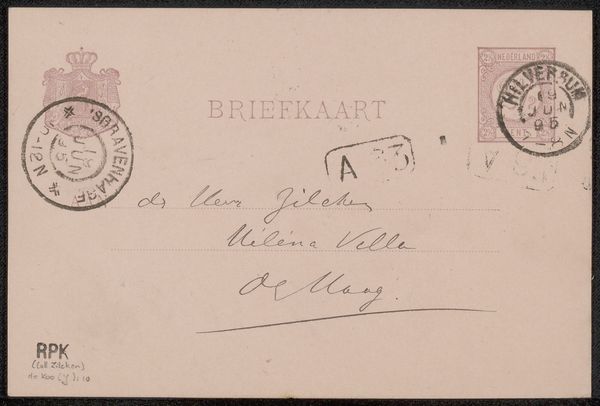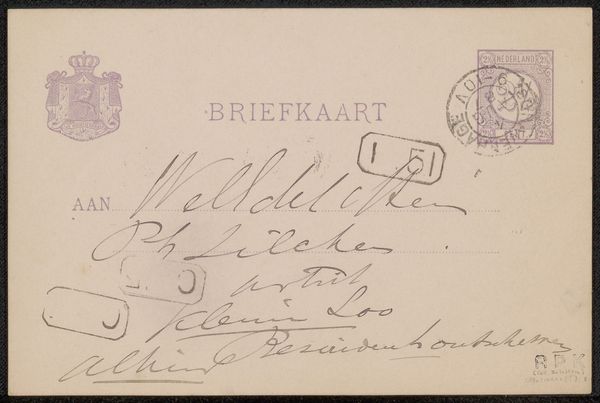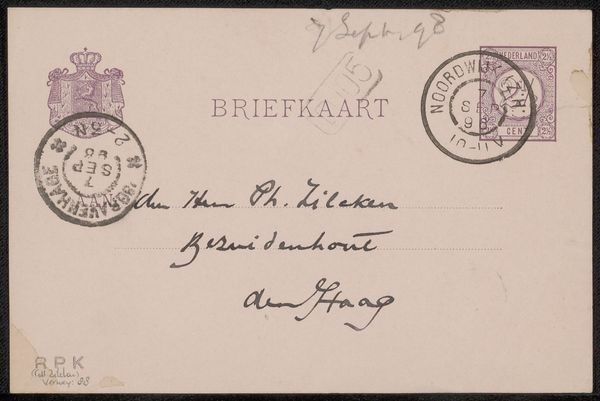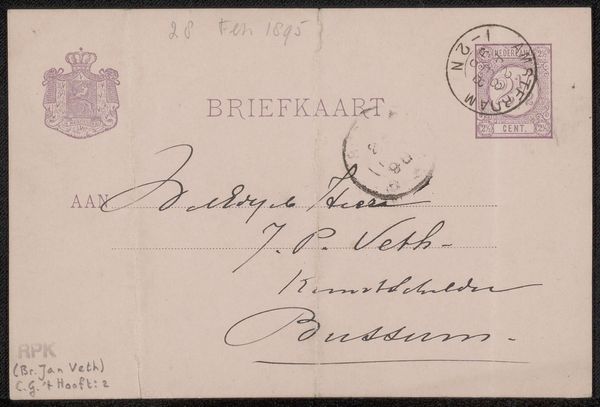
drawing, ink, pen
#
drawing
#
pen drawing
#
pen sketch
#
old engraving style
#
personal sketchbook
#
ink
#
ink drawing experimentation
#
pen-ink sketch
#
pen work
#
sketchbook drawing
#
pen
#
storyboard and sketchbook work
#
post-impressionism
#
sketchbook art
Copyright: Rijks Museum: Open Domain
Curator: This unassuming object is a postcard addressed to Jan Veth by Willem Witsen, dating from approximately 1885 to 1888. It's executed in pen and ink, a humble medium, really emphasizing direct communication. Editor: My first thought is, how intimate! You almost feel like you're intruding on a private moment between two friends. The faded ink and postal markings create an atmosphere of history. Curator: The fascinating thing about this piece is how it brings into focus the labor involved in artistic networks. Witsen uses this readily available, mass-produced postcard—a functional, utilitarian object—as the foundation for this intimate message. Editor: Absolutely, and think about Veth himself—an art critic, essayist, poet, designer, and painter—receiving this. The intersection of their artistic lives, their collaborative and competitive dynamics, all become embodied in this single artifact. Curator: Exactly. It shifts our understanding. Instead of romanticizing the artwork as something purely aesthetic, it shows us art functioning as a practical tool embedded within a specific creative community. How did artists in the 1880s collaborate and share ideas outside the studio? Editor: The handwritten address itself speaks volumes. To "den weerl Heer Jan Veth" at Hemony Vtraal 25, Amsterdam. It's about place, about solidifying identities within a rapidly changing urban landscape. Imagine the postal worker making his rounds, participating in the transmission of artistic discourse. Curator: And don't forget the materiality! The type of paper, the ink itself, the postmarks – Utrecht alongside Amsterdam. These are all tangible links to specific networks of distribution and production. Editor: Looking closer, you begin to consider how these small-scale communications build towards larger movements, shifting attitudes towards gender, class and the emerging avant-garde in Holland at that time. Each brushstroke tells a nuanced, historically specific story. Curator: This tiny drawing is so compelling precisely because it dissolves the boundaries between "high art" and everyday life, pointing to production as fundamental. Editor: Right! We are forced to reflect upon the narratives often overlooked in grand narratives. By reading against the grain, this everyday card makes a bold proposition about social relations within Amsterdam's artistic circles.
Comments
No comments
Be the first to comment and join the conversation on the ultimate creative platform.

